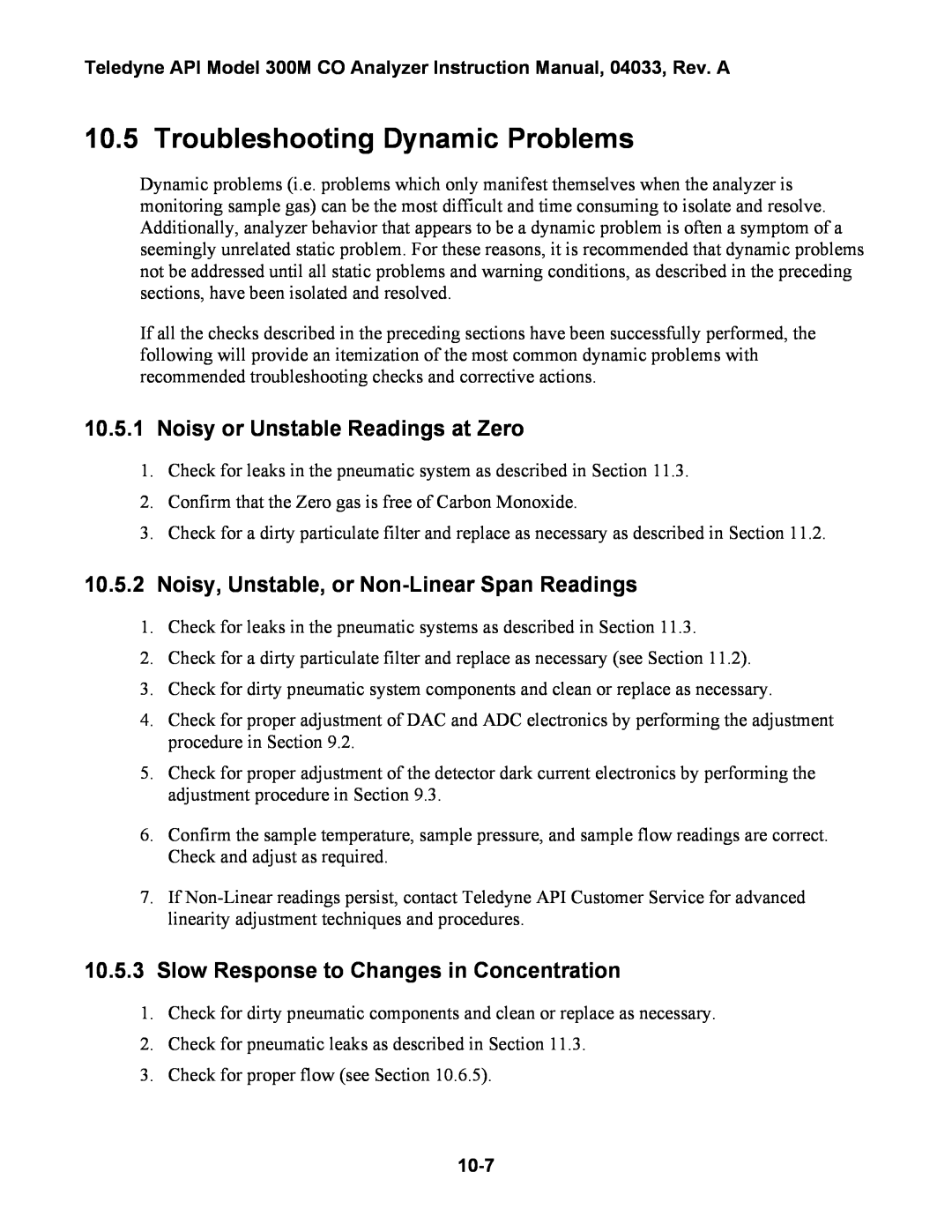Teledyne API Model 300M CO Analyzer Instruction Manual, 04033, Rev. A
10.5 Troubleshooting Dynamic Problems
Dynamic problems (i.e. problems which only manifest themselves when the analyzer is monitoring sample gas) can be the most difficult and time consuming to isolate and resolve. Additionally, analyzer behavior that appears to be a dynamic problem is often a symptom of a seemingly unrelated static problem. For these reasons, it is recommended that dynamic problems not be addressed until all static problems and warning conditions, as described in the preceding sections, have been isolated and resolved.
If all the checks described in the preceding sections have been successfully performed, the following will provide an itemization of the most common dynamic problems with recommended troubleshooting checks and corrective actions.
10.5.1Noisy or Unstable Readings at Zero
1.Check for leaks in the pneumatic system as described in Section 11.3.
2.Confirm that the Zero gas is free of Carbon Monoxide.
3.Check for a dirty particulate filter and replace as necessary as described in Section 11.2.
10.5.2Noisy, Unstable, or Non-Linear Span Readings
1.Check for leaks in the pneumatic systems as described in Section 11.3.
2.Check for a dirty particulate filter and replace as necessary (see Section 11.2).
3.Check for dirty pneumatic system components and clean or replace as necessary.
4.Check for proper adjustment of DAC and ADC electronics by performing the adjustment procedure in Section 9.2.
5.Check for proper adjustment of the detector dark current electronics by performing the adjustment procedure in Section 9.3.
6.Confirm the sample temperature, sample pressure, and sample flow readings are correct. Check and adjust as required.
7.If
10.5.3Slow Response to Changes in Concentration
1.Check for dirty pneumatic components and clean or replace as necessary.
2.Check for pneumatic leaks as described in Section 11.3.
3.Check for proper flow (see Section 10.6.5).
